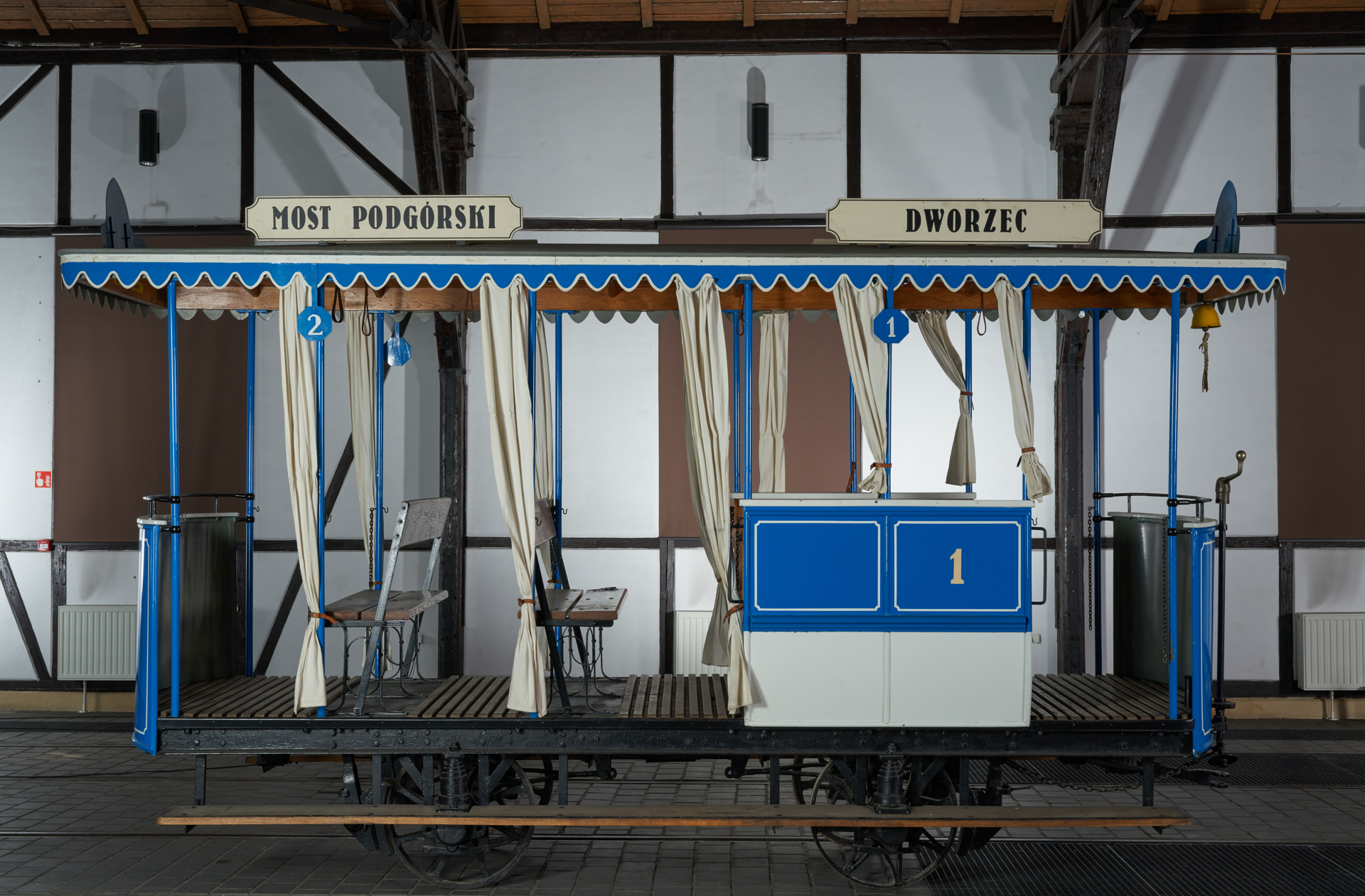
Horse-drawn tram – summer car PW1-112
Towarzystwo Belgijskie "Compagne General des Chemins de Fer Secondier", Miejski Zakład Naprawy Tramwajów Sp. z o. o., / 1882 podwozie - 1882 rok - 1965 nadwozie - 1965 rokCreator
Towarzystwo Belgijskie "Compagne General des Chemins de Fer Secondier", Miejski Zakład Naprawy Tramwajów Sp. z o. o.
Time and place of creation
Time:
1882 podwozie - 1882 rok - 1965 nadwozie - 1965 rok
Place:
Poland
The beginnings of urban transport in Kraków date back to 1875, when the horsebus was implemented. Even back then it was an outdated means of transport, of little attraction for passengers due to the cobbled streets. From the beginning, therefore, alternative forms of public transport were considered, which the rapidly developing Krakow was in dire need of in the late 19th century. In 1871, the British and Foreign Tramways Company of England put forward an initiative to build a horse-drawn tram line in Krakow, which was followed by numerous other offers from all over Europe. As a lot of concern and doubt grew around the project (predominantly expressed by the conservative milieu concentrated around Krakow’s “Czas” magazine), and the conditions demanded by prospective contractors were difficult to fulfil (they requested tax exemption for decades and the assignment of land for free), the contract for the horsecar implementation was not signed until 1882. It was awarded to the Belgian Compagnie Générale de Chemins de Fer Secondaires, which represented the Bank of Belgium. According to the contract between the Municipality of the City of Krakow and the Bank of Belgium: “The line upon which the Bank of Belgium is required to build and maintain the horse-drawn railways, shall be as follows: from the Podgorski bridge, via Mostowa, Wolnica, Krakowska street, Stradom, Grodzka street, the Market Square along the eastern side next to St. Mary’s church, Floryanska street and gate (without interfering with the latter), Basztowa street, Lubicz, to the northern Ferdinand railway station (…)”. The length of the first tram line was a mere 2.8 km, and cars moved on 900 mm gauge tracks.
The cars traveling on the route described above came in two versions: winter and summer. The summer car presented here has partial side walls (some of the cars were completely open). The inside of the car was divided into two classes, 1st and 2nd. Fares were four and three cents per ride, respectively. Running boards were installed along the entire sides of the tram, below the floor level. Uncovered platforms were also placed at the front and rear of the vehicle. The tram driver had a handbrake, operating on the first axis in the direction of travel.
The cars (which later became part of the electrified rolling stock) remained in operation until 1917. After decommissioning, only one PW1 car, number 112, was preserved, and after World War II it was used for tourism – carrying visitors around the Main Market Square. In the 1990’s, the MPK (municipal transportation enterprise) refurbished the car, which allowed the original division into classes to be restored, as well as entry from the running boards on the sides. From 2001 it has been a part of the Museum of Urban Engineering’s collection.
Horse-drawn tram – summer car PW1-112
Towarzystwo Belgijskie "Compagne General des Chemins de Fer Secondier", Miejski Zakład Naprawy Tramwajów Sp. z o. o., / 1882 podwozie - 1882 rok - 1965 nadwozie - 1965 rokCreator
Towarzystwo Belgijskie "Compagne General des Chemins de Fer Secondier", Miejski Zakład Naprawy Tramwajów Sp. z o. o.
Time and place of creation
Time:
1882 podwozie - 1882 rok - 1965 nadwozie - 1965 rok
Place:
Poland











